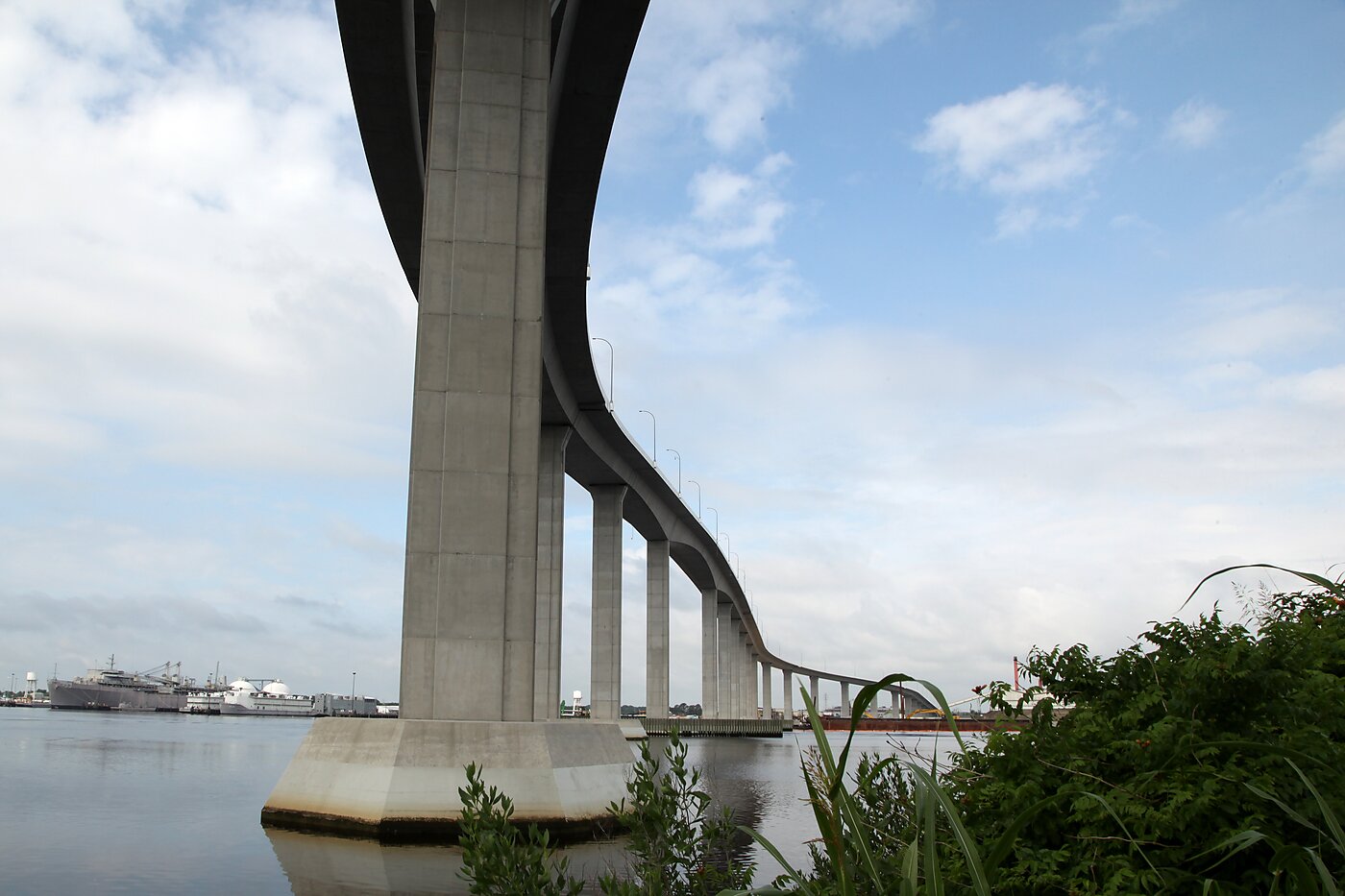
South Norfolk Jordan Bridge
To Replace the Francis Scott Key Bridge Quickly, Turn to a Private Owner/Operator
As we mourn the six who perished in the Francis Scott Key Bridge collapse and consider the near‐term implications for the Port of Baltimore, policymakers must also grapple with the question of how to replace the fallen span. Although President Biden has already taken out the federal government’s heavily overdrawn checkbook, Congress and state officials will also have a say as to whether this check gets written and how large it should be.
One option that could minimize or even eliminate any taxpayer liability is to authorize a private firm to build and operate the new bridge, relying on toll revenues to cover costs and earn a profit.
Perhaps even more important than cost savings is the speed that a properly incentivized and competent private company can bring to the rebuilding task. In the twenty‐first century, the US public sector seems to have forgotten how to build large transportation infrastructure projects quickly. The most well‐known example is California High‐Speed Rail, which will start service at least ten years later than the original plan. But another California case is even more relevant here.
In 1989, pavement on the eastern span of the San Francisco Bay Bridge collapsed during the Loma Prieta earthquake. Although engineers realized that the structure needed to be replaced, it took 24 years and over $6 billion for a replacement span to begin operation.
In New York State, a project to replace the Tappan Zee Bridge between Rockland and Westchester Counties also came in late and over budget, although the delays were nowhere near as bad as those in San Francisco. But like its California counterpart, New York’s new Mario M. Cuomo Bridge suffered from potential safety problems due to the failure of high‐strength bolts in bridge support structures.
The defective bolts were procured by the private contractor building the Cuomo Bridge, and a whistleblower alleged that it covered up the problem. This is just one example of how private infrastructure construction firms can and do screw up. At the same time, public sector officials can also fail at the task of creating and maintaining infrastructure that meets the highest safety standards.
That fact was on graphic display when it became clear that the Francis Scott Key Bridge lacked adequate dolphins and fenders to protect the piers supporting the structure from a ship impact. The Maryland Transportation Authority (MDTA) could have installed such protections in the aftermath of Tampa’s Sunshine Skyway bridge collapse in 1980 but failed to do so. Engineers differ as to whether a proper protection system would have been enough to stop the Dali from taking down the Key Bridge, and we’ll probably have to wait for the NTSB’s conclusions to know for sure. But clearly the protections on the Key Bridge were far inferior to those surrounding comparable structures.
While no economic arrangement can guarantee total safety, one in which the bridge’s owners face losses from inadequate design is more likely to produce better results. This is why it would be better to not simply rely on a private contractor to rebuild the bridge and turn it over to the MDTA, but to instead require the company to operate the facility, earning back construction costs with toll revenue and shouldering ongoing liability for construction defects and inadequate maintenance.
Private road infrastructure has a long history in the US, as my colleague Chris Edwards has previously discussed. One contemporary example is that of the South Norfolk Jordan Bridge in Southern Virginia. This mile‐long structure was built for $142 million by FIGG Bridge Engineers in 2012 without public funds and is now privately operated by United Bridge Partners.
One objection to private ownership and operation is that the company owning the bridge will maximize revenue by charging high tolls, adversely impacting low‐income drivers. But at least in the case of the Key Bridge, the new owner would face competition from two government‐owned tunnels nearby and routes further away. Setting tolls well above the cost of using alternative routes would result in much lower traffic and less revenue for the bridge’s owner. Also, while tolls would likely be higher than those charged at the tunnels, low‐income drivers using the tunnel will still benefit from the bridge because it will take away some of the traffic that they would otherwise encounter, reducing delays.
Back‐of‐the‐envelope calculations suggest that a private operator would indeed have to raise tolls to make rebuilding and operating the bridge profitable. In fiscal year 2023, tolls ranging from just $1.40 for cars using the MDTA’s commuter discount plan to $30 for a six‐axle truck yielded total revenue of $56.8 million.
If rebuilding the bridge costs $800 million, and that cost is financed over thirty years at an annual interest rate of 5 percent, debt service payments would run $52 million annually, leaving an insufficient cushion to cover operating costs and insurance while earning an adequate return (even in the very unlikely event that traffic on the new bridge quickly returns to 2023 levels).
The state could assist a private owner/operator by letting it apply any insurance payout to the rebuilding cost and authorizing it to issue private activity bonds whose interest would be income tax exempt.
Policymakers might be tempted to further “buy down” eventual toll rates by subsidizing the owner/operator with tax revenues, but this is a temptation that should be resisted. Those of us who criticize massive subsidies to urban transit should also oppose subsidies to automobile travel.
Marc Joffe is a federalism and state policy analyst at Cato Institute and a visiting fellow at the Maryland Public Policy Institute.





